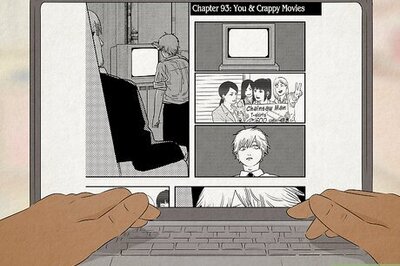
views
WASHINGTON Americans increased their retail purchases by 1.2% in July, with solid gains in appliances and clothing, restoring sales to their level before the viral pandemic erupted in March.
Sales at retail stores and restaurants have now risen for three straight months, after enormous plunges in March and April, when the pandemic suddenly shuttered businesses and paralyzed the economy.
Still, much of that spending has been fueled by government relief spending that had put more money in people’s pockets but has since expired. With Americans’ overall income likely shrinking, economists expect a potential drop in spending and a weakening of economic growth.
Roughly 28 million laid-off workers are no longer receiving a $600-a-week federal unemployment check that they had received in addition to their state benefit but that expired last month. In addition, a $1,200 stimulus check that was sent to many Americans in April and May likely won’t be repeated. Negotiations in Congress on a new economic relief package have collapsed in rancor and show no sign of restarting anytime soon.
Many retailers have said the supplemental unemployment aid had helped spur sales of clothes and other non-discretionary items in the spring and early summer.
Retail sales include only about one-third of all consumer spending. The rest involves services from haircuts and gym memberships to movie tickets and hotel rooms all of which were hit disproportionately hard by the pandemic and have yet to recover
In the April-June quarter, consumer spending collapsed by a record amount, causing the economy to shrink at a previously unheard-of annual rate of 32.9%. Economists have forecast that growth is rebounding in the July-September quarter at a roughly 20% annual rate, though that pace would still leave the economy far below pre-pandemic levels.
The government’s figures mask a huge shakeout in the retail industry, with Americans pulling sharply back on in-person shopping and spending more online. More than 40 retailers have filed for bankruptcy protection this year, about half of them since the pandemic. Thats about double the number for all of 2019.
Many of these retailers had been ailing before the pandemic. But analysts envision another wave of retail bankruptcies in coming months that would include some companies that were financially healthy before the virus struck.
In recent weeks, Ann Taylor’s parent company declared bankruptcy. So did the Lord & Taylor department store chain and the discount store chain Stein Mart, which had been in business for 112 years.
Stein Mart cited the resurgence of coronavirus cases in Florida, Texas and California as a key factor in its bankruptcy filing. The company has many stores in those states, a fact that hurt customer traffic and drained its cash.
Disclaimer: This post has been auto-published from an agency feed without any modifications to the text and has not been reviewed by an editor




















Comments
0 comment